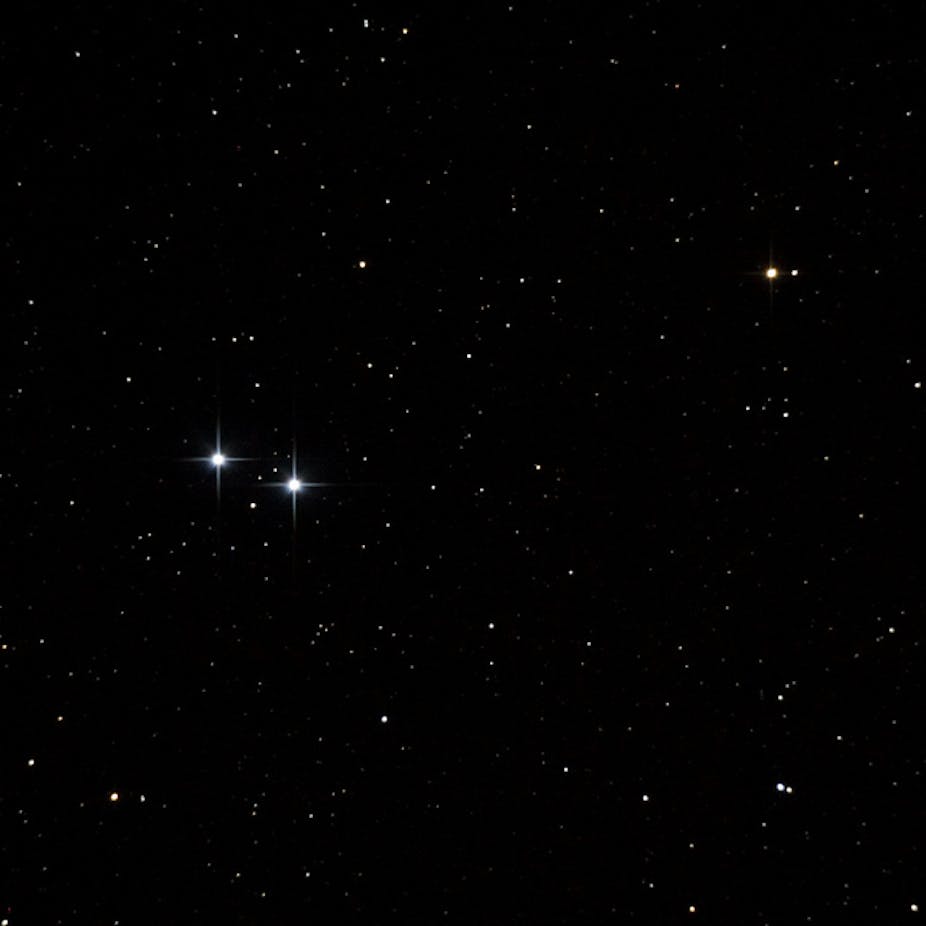SS Cygni, a famous stellar system made up of one normal star and one dead star, is much closer than previously thought, according to a new study by Australian researchers and citizen scientists.
The new findings, published in the journal Science, show that SS Cygni is 372 light-years from Earth, contrary to a previous estimate of 520 light-years.
SS Cygni had long baffled astronomers because existing theories suggested it should be much closer than the distance that was previously measured by the Hubble Telescope.
The authors of the study, with the assistance of citizen scientists, tracked the movements of SS Cygni between 2010 and 2012 as it appeared to “wobble” back and forth against stationary background galaxies.
“This apparent ‘wobble’ occurs because the Earth is moving around the Sun,” said lead author of the paper and research Fellow at the Curtin University node of the International Centre for Radio Astronomy Research, James Miller-Jones
“Because we’re looking from a slightly different position in spring than we are in autumn, a nearby star seems to move compared to a distant background galaxy. The amount of movement tells us exactly how far away the star is.”
Dr Miller-Jones said you can see the same effect by holding your finger out at arm’s length.
“Look at it with one eye, and then with the other. You’ll see it appear to move against the background. Bring your finger closer to you, and it will move more.”
The size of the wobble showed that SS Cygni was much closer to Earth than previously thought, meaning that it is less powerful, and therefore more like other similar star systems, resolving a problem that has confounded astronomers for decades.
Dr Miller-Jones said that the citizen scientists could look at the system every night for a couple of months, and then alert the research team to look with their radio telescopes at exactly the right time to measure the size of the wobble, and hence how far away the star system was from the Earth.
“That meant that we knew exactly the right times to look to detect radio waves, so we didn’t waste precious time on some of the world’s most powerful telescopes in staring at the star system when there would be nothing to see,” he said.
Dr Miller-James said the research findings bring SS Cygni much closer to Earth, “to get a brightness that agrees much better with our theoretical expectations”.
Citizen scientists
Dr Miller-Jones said that a network of thousands of citizen scientists “meant that someone, somewhere in the world, always had clear skies to be able to observe the object, and also that our network was able to provide multiple measurements every night, to see how the brightness of the star system was changing with time.”
Citizen scientists could also help astronomers unpack the secrets of gamma rays bursts, nearby supernovae, dwarf novae and several other types of variable stars, he said.
Steven Tingay, Professor of Radio Astronomy at Curtin University said the new findings were fantastic because they solved irregularities between theory and observation of the SS Cygni system.
“This work builds on decades of study of these types of system, including development of the theory and ever improving observations,” said Dr Tingay, who was not involved in the study.
“There was a clear question to answer. Miller-Jones and his team came up with a clever experiment to answer that question and managed to execute it very well.”
“We can now apply the theory that has been verified to other systems with a high level of confidence. This means that we can now take the next steps in understanding this and other similar systems,” Dr Tingay said.

